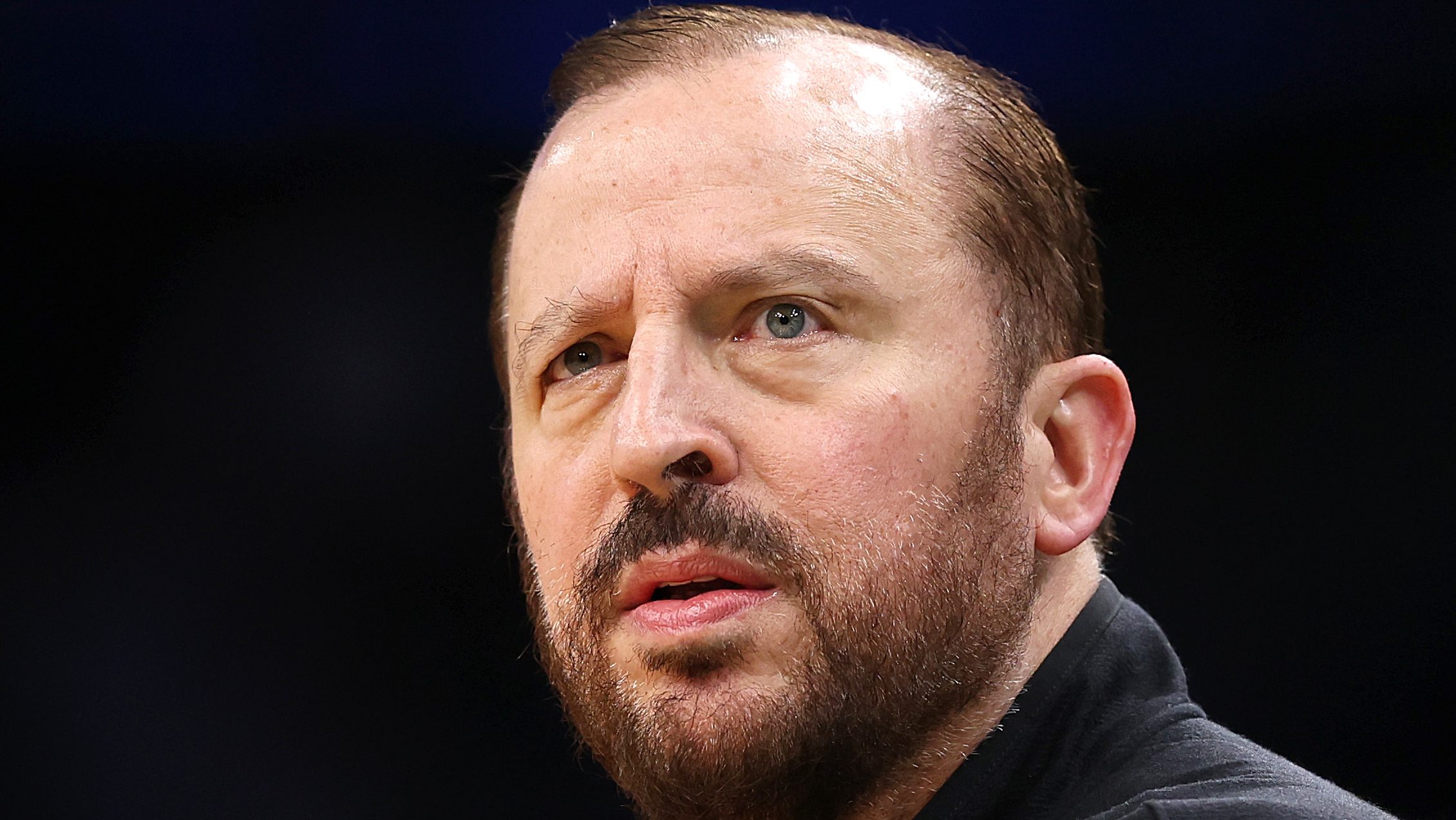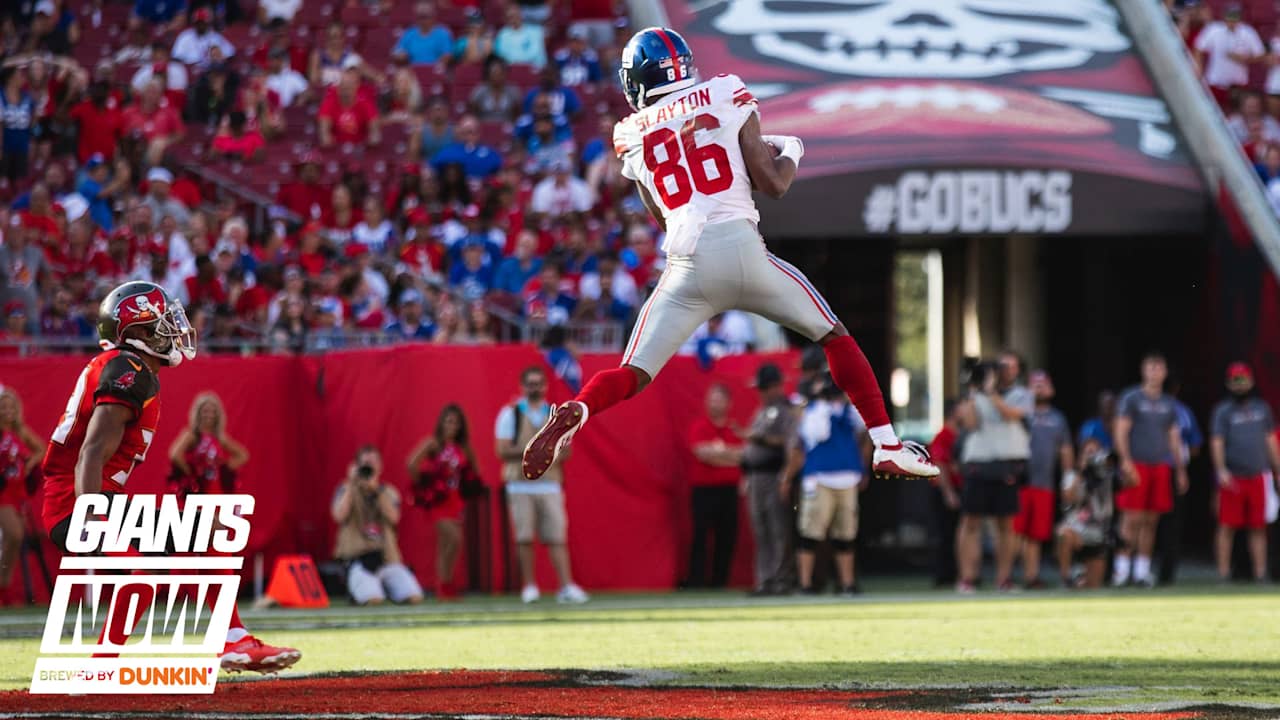NFL
Should wide receivers be drafted in the top 10?

Whether the New York Giants should have selected wide receiver Malik Nabers with the sixth pick in the 2024 NFL Draft or taken quarterback J.J. McCarthy (or Michael Penix Jr. or Bo Nix) is THE question on the minds of many Giants fans this week. Only time will tell whether McCarthy thrives in the QB-friendly environment of the Vikings, but not much attention has been given to the flip side of the issue:
Is it worth using a top 10 pick on a wide receiver?
Many people gave the Giants high marks for selecting Malik Nabers at No. 6. Kevin Cole of Unexpected Points is not one of them. Here is his assessment of the overall value of the Giants’ draft relative to their NFC East counterparts:
Courtesy of Unexpected Points
If this looks a bit upside-down to you, you have company. Here’s what Cole has to say about the Giants:
The Giants continue to be one of the more uninspiring front offices in the NFL. They made no trades, at least adhering to the “do no harm” philosophy. They really get crushed for positional value, taking Malik Nabers in the top-5 where historical averages favor quarterbacks, offensive tackles and pass rushers. Drafting a safety in the second round, the lowest value position in the early round, is a sure-fire way to burn draft capital.
Even ignoring the detail that Nabers was taken outside the top 5, this is a surprising assessment of the Giants and the division as a whole. Most analysts felt that Dallas had an uninspiring draft that doesn’t move the needle much for them. In Cole’s analysis, though, they got great value by trading down from No. 24 to No. 29 with Detroit for an extra third round pick and using No. 29 on an offensive tackle, while not reaching for any of their picks (the “discipline” column).
Analytics says that going wide receiver high in Round 1 is not worth it because good receivers can be found throughout the draft, not because wide receiver is not an inherently valuable position. In a passing-dominated NFL, elite wide receivers are a necessity. That’s different from positions such as off-ball linebacker and running back, which are no longer thought to be first-order contributors to NFL success. What do recent drafts have to say about this? Here is a summary of results from the past four drafts plus the most recent one:
:no_upscale()/cdn.vox-cdn.com/uploads/chorus_asset/file/25425672/Screenshot_2024_04_29_at_1.12.11_PM.png)
Data from Pro Football Reference
I have used the Pro Football Reference weighted career Approximate Value (wAV) metric to summarize the value of each wide receiver above. AV is an attempt to create a volume statistic of a player’s production over his career. The wAV version weighs the more successful seasons higher than the lower ones in an attempt to capture a player’s peak production during his most productive years. Thus, a player who is very good for a long time and stays on the field gets the highest marks.
Since wAV is a weighted career sum, it is higher the longer a player has been in the league. To compare draftees from different years, the wAV per year is a better indication. For me, the eye test on this metric is that a wAV per year of about 7 or more is a better than average player, and a wAV per year of about 9 or more isolates the “elite” receivers from everyone else, but that is just a rough guide. I used the former threshold to identify players to include after Round 1 and the latter threshold to identify the elite WRs in boldface. I’ve also listed the 2024 class, whose quality is as yet unknown, just to show how the picks were distributed relative to previous classes.
What you can see from the chart above is that there is some validity to Cole’s argument…but it depends on the year, and also on the team. Here are some salient points:
- Twice in the past four years, no wide receivers have been taken in the top 10. In 2023, that seems to have been the right call. Zay Flowers had the best rookie season of the four first-rounders, but despite his AV of 9, he doesn’t yet scream “elite.” Time will tell whether he develops into that on a consistent basis. Overall, though, the 2023 class didn’t seem to have any truly elite wide receivers on Day 1, though Day 2-3 steals Jayden Reed and Puka Nacua may be that.
- In the 2020, passing on a wide receiver in the top 10 was a bad idea. The problem was identifying which were the elite ones. Six receivers went off the board in Round 1, and there are three who have become elite, but they were the third, fourth, and sixth chosen.
- In 2021, three receivers were taken in the top 10 and all three have become elite. The lower part of Round 1, in fact almost the entire rest of the draft, was devoid of elite WRs except for Amon-Ra St. Brown, a Round 4 steal.
- Both wide receivers taken in the top 10 in 2022 have gotten off to very good career starts but have been just short of elite by my subjective wAV threshold. That might be the fault of the dividing line I chose…but it illustrates another issue. Since wAV is a volume-based metric, and since receivers don’t throw to themselves, quarterback performance comes into play in determining production. It is safe to say that Drake London and Garrett Wilson have not been blessed with great QBs to work with thus far (and in the case of London, a run-first head coach as well). We’ll see if London’s and Wilson’s production ramps up this year with better QB play anticipated, solidifying them as elite choices worthy of the top 10. Note also that Chris Olave, chosen at No. 11, did clear the elite threshold.
We don’t know at this point what type of players Marvin Harrison Jr., Malik Nabers, and Rome Odunze will become. What we can say is that Cole’s assessment of the value of the wide receiver position has some validity overall but that it may not work well in specific years. The five top 10 receivers drafted in the past four years are all excellent. Ja’Marr Chase was the final piece in making Cincinnati a Super Bowl team, while DeVonta Smith was the first piece in the rise of the Eagles’ offense to Super Bowl-caliber. Jaylen Waddle plays second fiddle to Tyreek Hill on the NFL’s scariest offense, but he’d be No. 1 on many other teams. London and Wilson could take that next step this year with better quarterback play.
This suggests that NFL teams are pretty good at figuring out when truly top-notch receiving prospects are available in the draft. There haven’t been any misses in the top 10 at that position since 2017, when Corey Davis was taken No. 5, Mike Wiliams (a very good but injury-prone player) at No. 7, and John Ross at No. 9. Teams have learned when using a premium pick on wide receiver is good value.
So the odds are that the Giants got good value in taking Malik Nabers No. 6. Whether that value will be realized will depend on whether Daniel Jones, or whoever is at quarterback when the season begins, can get him the ball, and get it to him in position to make the most of it after the catch.










